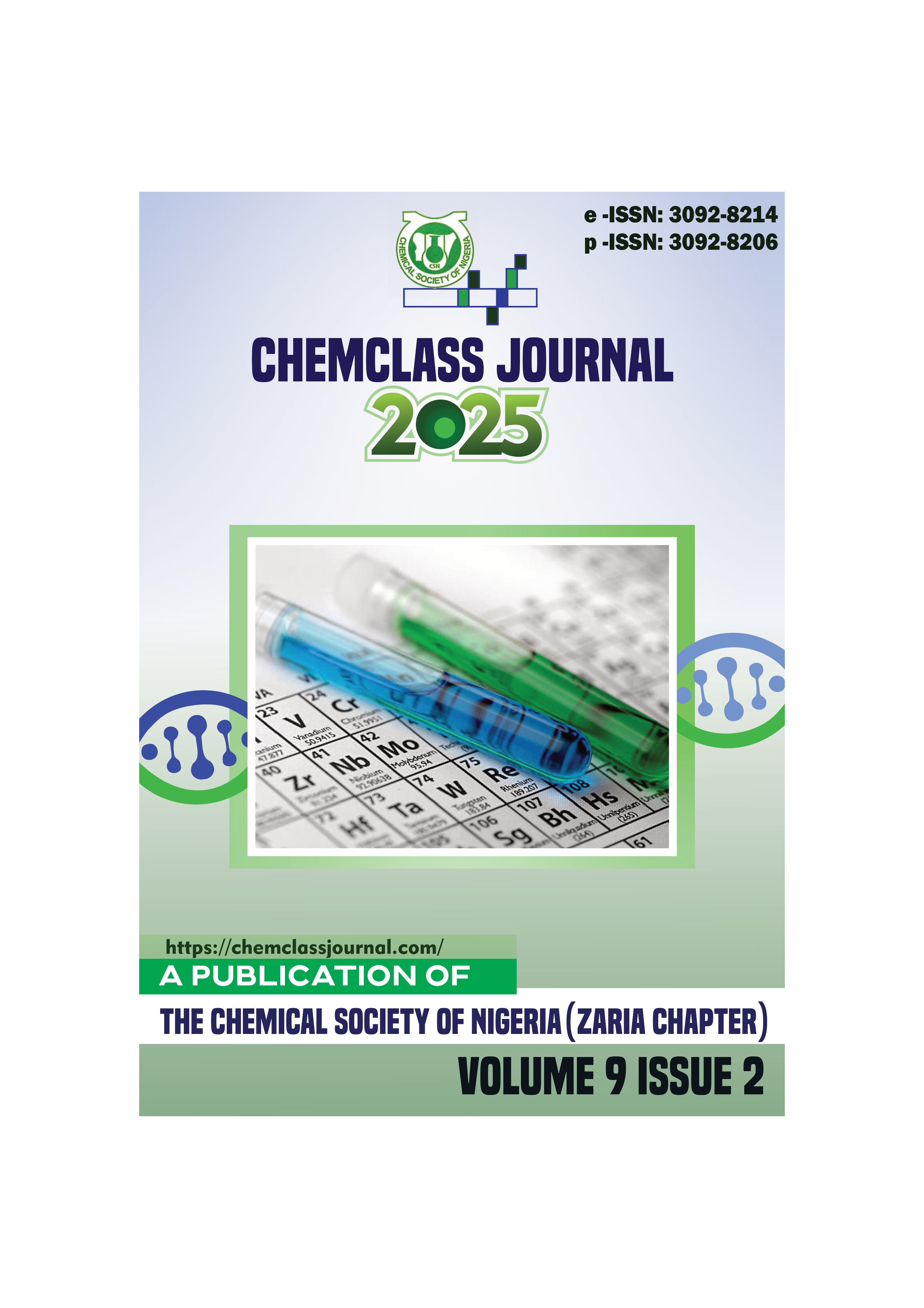Levels of Antibiotics in Fish Species from Eleyele River, Ibadan, Nigeria
DOI:
https://doi.org/10.33003/chemclass-2025-0901/149Keywords:
antibiotics , fish contamination , Eleyele River , HPLC-DAD , food safetyAbstract
Antibiotics are commonly used to treat infections in humans and animals, and in aquaculture to prevent
bacterial diseases. However, their excessive use in livestock and poultry have led to environmental
contamination, particularly in water bodies, raising concerns about food safety and public health. This study
investigated the presence of tetracycline, chloramphenicol, and metronidazole in three fish species—
Parachanna obscura (Obscure snakehead), Clarias gariepinus (African sharp-tooth catfish), and
Oreochromis niloticus (Nile tilapia)—from Eleyele River in Ibadan, Nigeria. Using solid-phase extraction
and silica gel clean-up, followed by high-performance liquid chromatography with diode-array detection
(HPLC-DAD), antibiotic residues were detected at concentrations ranging from below detection limits to
1311.82 ng/g. Method validation showed high sensitivity, with limits of detection (LOD) between 0.13
9.17 ng/g and limits of quantification (LOQ) from 0.41–27.78 ng/g. P. obscura and C. gariepinus had
significant levels of all three antibiotics, while no residues were found in O. niloticus. The concentrations
found exceeded the 0.1µg/g maximum residue limit set by the European Union, indicating a potential health
risk for consumers and environmental harm. This study concluded that the fishes from Eleyele River were
contaminated with antibiotic residues at levels above international safety standards. It is recommended that
routine monitoring be enforced, alongside stricter regulations and public education on responsible antibiotic
use in agriculture and aquaculture, to mitigate further contamination and protect public health.





 ChemClass Journal
ChemClass Journal
